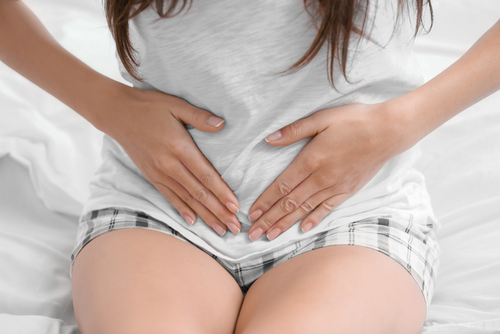Endometriosis is a condition in which excess endometrial tissue begins to grow in places outside of the uterus, such as the fallopian tubes, ovaries, or other places in the abdomen. Affecting an estimated 6.5 million, or 11% of women in the United States, it is a common problem that can cause serious complications.
Like the tissue in the uterus, the excess endometrial tissue also bleeds every month, but because this occurs in different parts of the abdomen, the blood cannot easily leave the body, so it can cause swelling and chronic pain. Additional complications can include blocked fallopian tubes or cysts in the ovaries due to accumulation of trapped blood, excess scar tissue that can cause pain or make it difficult to get pregnant, and problems with the intestines or bladder, such as painful urination or gastrointestinal issues. Endometriosis can even lead to infertility, pain during sex, and abnormal periods.
When endometriosis is suspected, several diagnostic methods can be used, including a pelvic exam, ultrasound, CT scan, or MRI. The only way to confirm endometriosis with certainty is through laparoscopy, a surgery that uses a thin tube with light and a camera to examine the abdomen. However, because the symptoms of endometriosis can mimic symptoms of other conditions, it can sometimes take up to 3-11 years for women to receive a diagnosis.

The most commonly used method for classifying endometriosis is from the American Society of Reproductive Medicine, which uses four stages and is based on the location, amount, and size of endometrial tissue discovered during the laparoscopy.
Stage I (1-5 points) is “minimal,” and means there are a few small, shallow implants of tissue on the ovary, with little to no scar tissue.
Stage II (6 to 15 points) is “mild,” and includes slightly more and deeper lesions on the ovary or pelvic lining, and there may be some scar tissue.
Stage III (16 to 40 points) is “moderate,” and includes many deep tissue implants. There may also be small cysts in one or both ovaries, or thin bands of scar tissue known as “adhesions.” Adhesions bind pelvic organs together and are suspected to be a main cause of the pain and nausea that many women experience.
Stage IV (40+ points) is “severe,” the most advanced form of the disease. Severe endometriosis consists of many dense implants and adhesions, as well as large cysts in the ovaries. There also may be lesions on the fallopian tubes or bowels.
It is important to note that the stages of endometriosis do not correspond to how much pain a woman may be feeling. A patient with Stage I disease may experience extreme pain, while a patient with Stage IV disease may not experience any symptoms.
Because of the frequency in which endometriosis is undetected or misdiagnosed, many doctors are making efforts to recognize the disease more effectively. Catching the disease earlier could prevent the development of dense and extensive scar tissue, which could increase the range of treatment options for patients.











